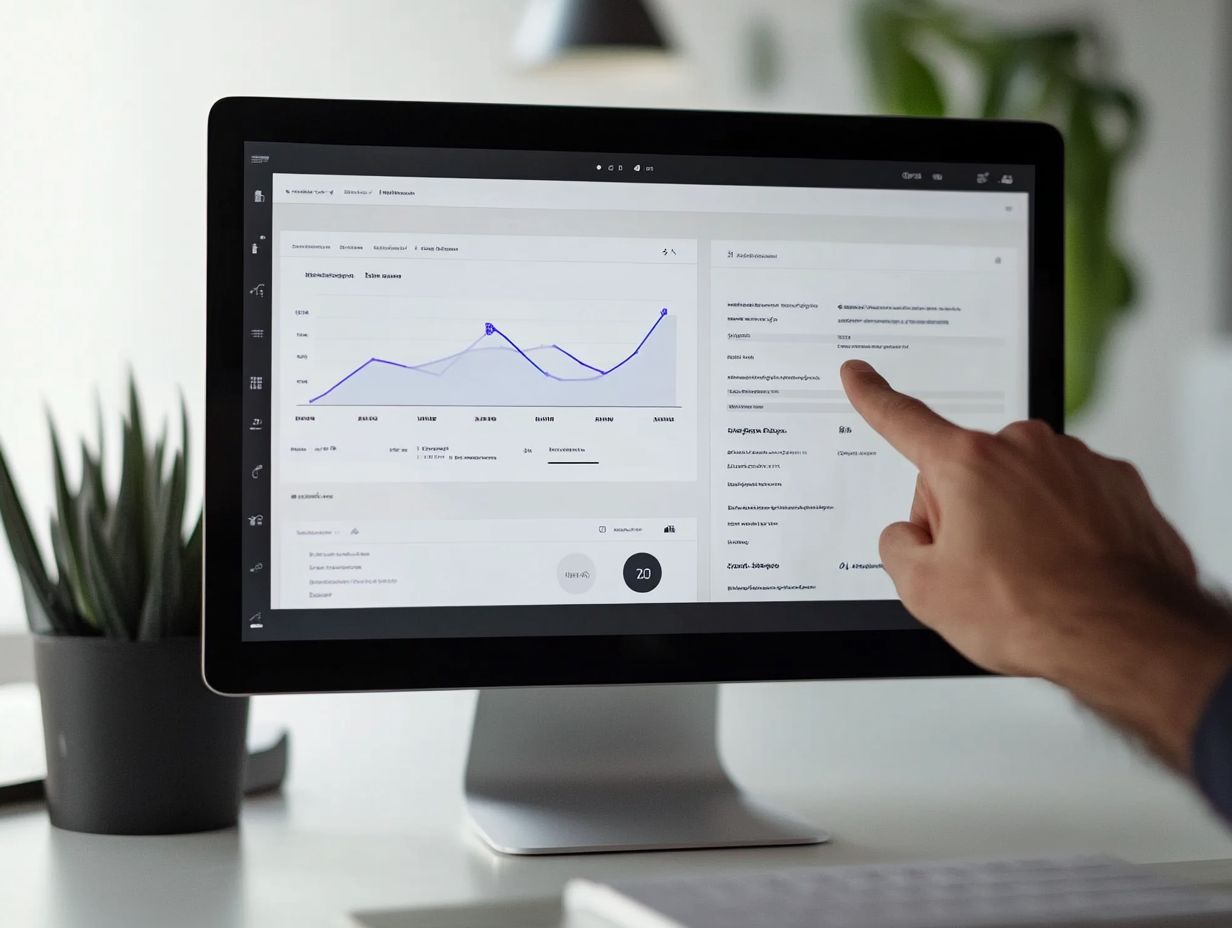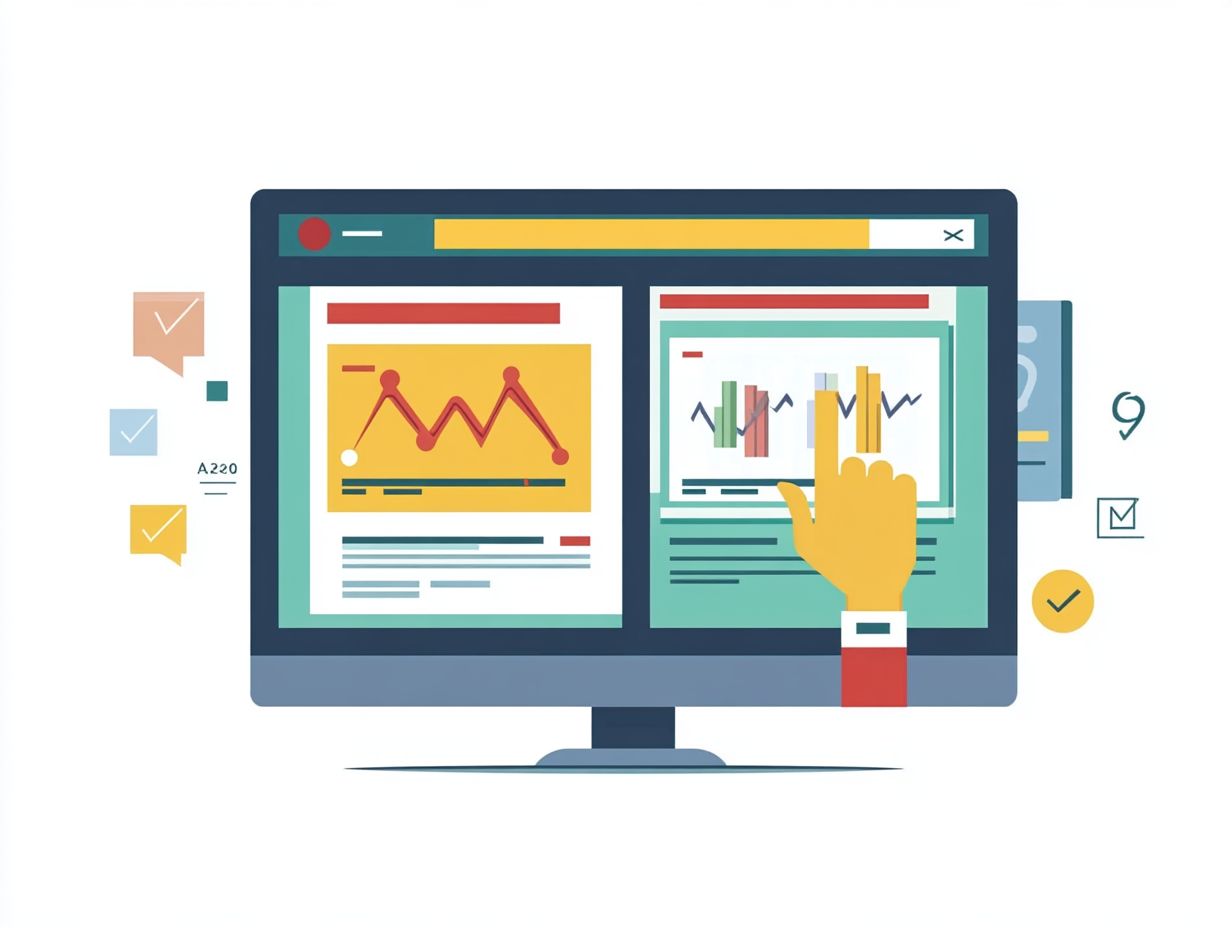How to Use A/B Testing Tools in Affiliate Marketing
In the fast-paced realm of affiliate marketing, optimizing your strategies can be the defining factor between achieving remarkable success and facing stagnation. This is your chance to transform your affiliate marketing approach!
A/B testing stands out as a powerful tool that enables you to compare different versions of your content. It helps uncover what truly resonates with your audience.
This article delves into the myriad benefits of A/B testing. It guides you on how to select the right tools, set up effective tests, and interpret the results with clarity.
It also shares best practices designed to help you sidestep common pitfalls and maximize your campaign’s potential. Are you ready to elevate your affiliate marketing game to new heights? Let s dive in!
Contents
- Key Takeaways:
- Benefits of A/B Testing in Affiliate Marketing
- Choosing the Right A/B Testing Tool
- Setting Up A/B Tests
- Interpreting A/B Test Results
- Tips for Successful A/B Testing in Affiliate Marketing
- Frequently Asked Questions
- What is A/B testing and how does it relate to affiliate marketing?
- Why should I use A/B testing tools in my affiliate marketing efforts?
- What types of elements can be tested using A/B testing tools?
- How do I choose the best A/B testing tool for my affiliate marketing needs?
- Can A/B testing be used in all types of affiliate marketing?
- How often should I perform A/B testing in my affiliate marketing efforts?
Key Takeaways:

- A/B testing tools are effective in improving conversion rates and ROI in affiliate marketing.
- Choose the right A/B testing tool based on cost, user-friendliness, and how well it works with your current systems!
- Successful A/B testing in affiliate marketing requires careful consideration of variables, metrics, and thorough analysis of key data to interpret test results.
What is A/B Testing?
A/B testing, or split testing, is your go-to strategy based on data for comparing two or more variations of a webpage, email campaign, or digital asset. It s about figuring out which version performs better, ultimately boosting conversion rates and enhancing user engagement.
By leveraging this method, you can make informed decisions grounded in actionable insights drawn from user behavior and statistical significance. This ensures that every change you make leads to improved website performance and heightened marketing effectiveness.
By systematically analyzing various elements think headlines, images, call-to-action buttons, and layout designs you can identify the specific factors that resonate with your audience. The process typically involves creating distinct test groups, each interacting with a different version of your digital asset.
By measuring performance metrics like click-through rates, engagement times, and conversion rates, you can validate your hypotheses about user preferences. This iterative approach deepens your understanding of user behavior and fosters a culture of continuous improvement.
In the fast-evolving landscape of digital marketing, this is crucial for staying ahead of the competition.
Benefits of A/B Testing in Affiliate Marketing
A/B testing offers numerous advantages in affiliate marketing, as it plays a crucial role in optimizing affiliate content. It helps fine-tune your strategies and boost conversion rates.
By experimenting with different elements, such as landing pages and promotional offers, you can pinpoint the most effective tactics. This optimizes your campaigns through a data-driven lens.
This approach not only improves your results but also nurtures stronger, more effective affiliate partnerships.
Improving Conversion Rates and ROI
Improving conversion rates and return on investment (ROI) are important goals in your affiliate marketing campaign. Utilizing split testing is an invaluable tool for achieving these objectives.
By systematically testing different design variations, call-to-action buttons, and email subject lines, you can pinpoint the elements that resonate with your audience. This leads to an enhanced user experience and, ultimately, a boost in ROI.
These optimization techniques may involve adjusting the messaging placement on your landing page or experimenting with various color schemes. This helps uncover which combinations yield the highest engagement.
Performance metrics such as click-through rates, landing page bounce rates, and overall sales figures are essential for evaluating the success of your tests. For instance, a well-executed A/B test on a checkout process showed that simplifying the number of steps resulted in a remarkable 25% increase in completed transactions.
This highlights how data-driven adjustments can significantly influence your performance and profitability.
Choosing the Right A/B Testing Tool

Selecting the ideal A/B testing tool is essential for marketers aiming to elevate their campaign success. Each tool offers unique features and functionalities, and understanding how to use social proof tools in affiliate marketing can significantly enhance your testing strategies, catering to diverse testing requirements and user preferences.
Renowned options like Optimizely, Unbounce, Visual Website Optimizer, Crazy Egg, and Hotjar enable marketers to create, implement, and analyze tests seamlessly. This helps you adopt data-driven strategies that boost user engagement and optimize conversion rates.
Factors to Consider
When selecting an A/B testing tool, consider several key factors to ensure your strategies are effective. Additionally, you may want to explore how to utilize user feedback tools for affiliates, thinking about audience segmentation, ease of implementation, and the ability to measure statistical significance of results.
Understanding how each tool aligns with your marketing objectives will enable informed decisions that enhance user experience and drive better campaign performance.
Audience segmentation is vital. It allows you to target specific demographics, ensuring results are relevant and actionable. Measuring statistical significance is equally important because it helps you determine if observed changes are due to real variations rather than random fluctuations.
Integrating your A/B testing tool with existing marketing platforms can streamline processes, making data collection and analysis more efficient. Carefully weigh these factors to select a tool that meets your needs and supports your overall strategy.
Pave the way for effective experimentation and improved outcomes!
Setting Up A/B Tests
Setting up A/B tests requires meticulous planning and execution. Identify which variables to test and establish the evaluation metrics. Devise testing strategies that align with your campaign optimization goals.
Define your objectives clearly. Ensure each test is based on solid hypotheses. This way, you can effectively assess user behavior and gather actionable insights that enhance performance improvements.
Determining Variables and Metrics
Choosing the right variables and metrics is crucial in A/B testing. These elements significantly influence outcomes and optimize your campaigns.
Examine user behavior. Align your metrics with your marketing goals to gauge test performance and make data-driven decisions that enhance user engagement and conversion rates.
Selecting appropriate variables means understanding what impacts user interactions, whether it s the placement of a call-to-action, the design elements, or the tone of your content.
Metrics like click-through rates (CTR), bounce rates, and average session duration are commonly assessed. For example, tracking CTR helps gauge how compelling a headline or button is in capturing user interest.
Analyzing bounce rates provides insight into whether users find value on a landing page. These metrics illustrate the relationship between design elements and user actions, enabling you to pinpoint areas for improvement that drive conversions.
Interpreting A/B Test Results

Interpreting A/B test results is an essential part of the optimization process. It offers invaluable insights that shape future marketing strategies and decision-making.
By analyzing performance metrics and ensuring statistical significance, you can extract actionable insights that enhance user experience and boost the overall effectiveness of your campaigns.
Start your A/B testing journey now!
Key Metrics to Analyze
Key metrics to analyze in A/B testing include click-through rates and conversion rates. Conversion rates measure how many visitors take a desired action, like making a purchase. These are essential indicators of your campaign’s performance and user engagement.
By honing in on these metrics, you can evaluate the effectiveness of different test variations and make informed decisions that elevate your overall marketing strategy.
Grasping these metrics not only sheds light on how well your campaign resonates with its audience but also pinpoints areas ripe for improvement. For example, a low click-through rate might hint that your call-to-action lacks the necessary punch. A noticeable drop in conversion rates could signal user experience issues after the initial click.
By meticulously examining these data points, you are enabled to refine your approaches and experiment with diverse content formats. Ultimately, this will drive better engagement and revenue. Effective monitoring of these key metrics is the backbone of successful marketing optimization, ensuring that you stay ahead in the ever-evolving landscape of digital marketing.
Tips for Successful A/B Testing in Affiliate Marketing
To achieve success in A/B testing for affiliate marketing, it’s essential for you to adhere to best practices while being mindful of common pitfalls that could undermine your results. Exploring tools that can help with affiliate marketing can also enhance your efforts.
Act now to avoid these pitfalls! By implementing optimization techniques such as meticulous audience segmentation, testing a single variable at a time, and ensuring an adequate sample size, you will significantly enhance the effectiveness of your testing efforts.
This meticulous approach will ultimately lead to improved outcomes for your campaigns.
Best Practices and Pitfalls to Avoid
Best practices in A/B testing involve a variety of strategies designed to maximize effectiveness while steering clear of common pitfalls that could distort your results. By concentrating on user engagement and clarifying your test objectives, you can uncover valuable insights that enhance decision-making.
Before launching any tests, it s essential to define what success looks like. This alignment will help your team measure outcomes more effectively. Consistency in testing means not only using the same audience segments but also maintaining similar conditions for each test iteration.
To truly understand user behavior, focus on metrics like click-through rates and conversion rates to gauge engagement accurately. Watch out for typical pitfalls, like changing variables mid-test or prematurely ending tests, as these can lead to inconclusive results.
To sidestep these setbacks, set a clear timeline and adhere to your predefined parameters throughout the entire testing process.
Frequently Asked Questions

What is A/B testing and how does it relate to affiliate marketing?
A/B testing is a method of comparing two different versions of a website, ad, or other marketing element to see which one performs better. In affiliate marketing, A/B testing can be used to determine the most effective strategies for promoting a product or service.
Why should I use A/B testing tools in my affiliate marketing efforts?
A/B testing allows you to make data-driven decisions about your marketing strategies rather than relying on guesswork. By using A/B testing tools and learning how to use survey tools for affiliate insights, you can optimize your campaigns for maximum success and profitability.
What types of elements can be tested using A/B testing tools?
A/B testing tools can be used to test a variety of elements, including landing page layouts, ad copy, images, call-to-action buttons, and more. Understanding how to effectively use these tools is crucial for marketers; for more insights, check out understanding the role of affiliate marketing tools. Any element that can be changed or modified can be tested to see which version performs better.
How do I choose the best A/B testing tool for my affiliate marketing needs?
When choosing an A/B testing tool, consider factors such as ease of use, available features, pricing, and customer support. It may also be helpful to read reviews and compare different options to find the best fit for your business.
Can A/B testing be used in all types of affiliate marketing?
Yes, A/B testing can be used in any type of affiliate marketing, whether you are promoting physical products, digital products, or services. Additionally, understanding how to use SEO tools in affiliate marketing can enhance your efforts, as the principles of A/B testing can be applied to optimize any marketing campaign.
How often should I perform A/B testing in my affiliate marketing efforts?
Want to boost your affiliate marketing? A/B testing is key!
Keep doing A/B testing regularly to improve your strategies. You can schedule tests monthly or quarterly.
Also, test whenever you make significant changes to your campaigns.


